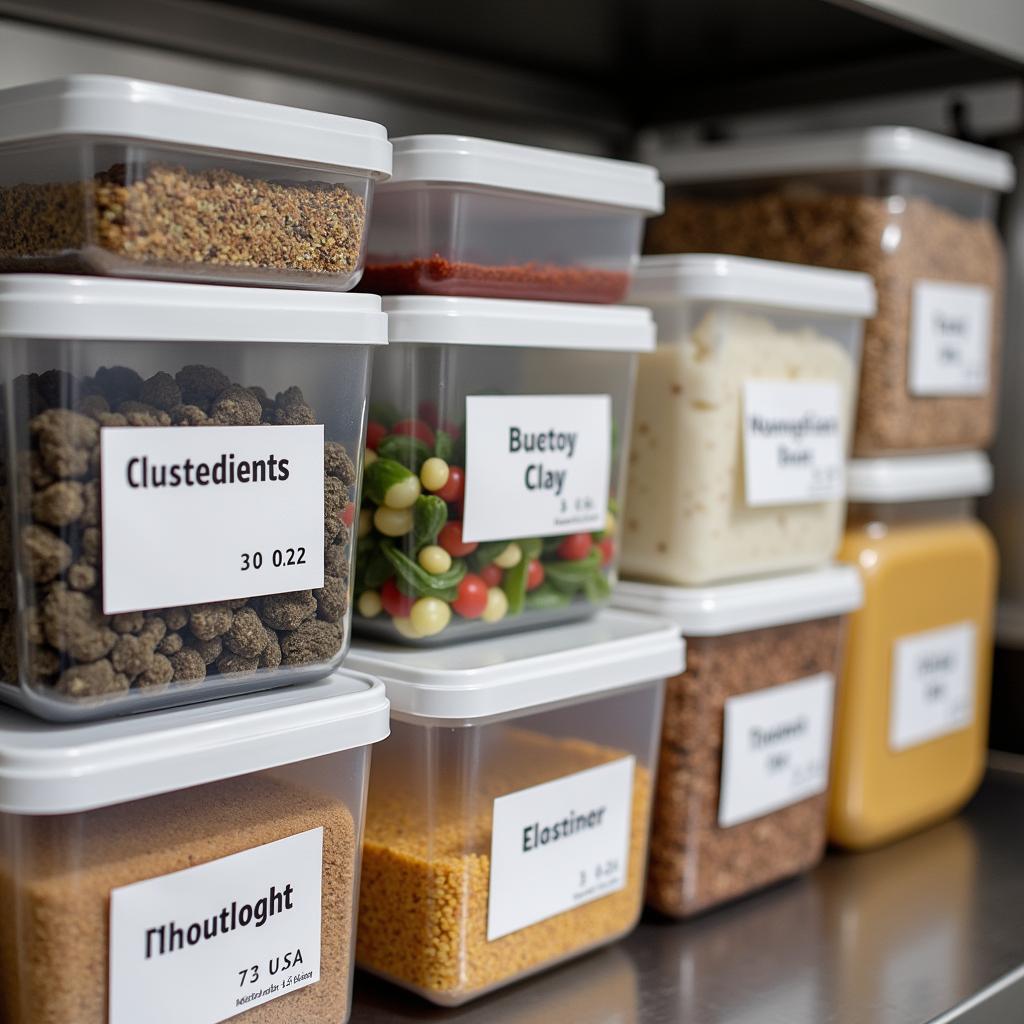Professional kitchens are a whirlwind of activity, a carefully orchestrated dance of sharp knives, sizzling pans, and the intoxicating aromas of culinary masterpieces in the making. At the heart of this symphony of flavors lies a fundamental principle often unseen by the casual observer: chef’s path food storage.
This isn’t just about cramming ingredients into refrigerators – it’s a strategic system designed to maintain freshness, minimize waste, and streamline the cooking process. Just like a well-organized toolbox allows a carpenter to work efficiently, a well-structured food storage system is a chef’s secret weapon to consistent, high-quality dishes.
The Fundamentals: Why Chef’s Path Food Storage Matters
Think of chef’s path food storage as the foundation upon which culinary success is built. Here’s why it’s so crucial:
- Freshness Preservation: Proper storage techniques lock in flavor and nutrients, ensuring every ingredient is at its peak when it hits the pan.
- Waste Reduction: Clear organization and labeling minimizes the chance of ingredients getting lost in the back of the fridge, forgotten and ultimately wasted.
- Efficiency Boost: Knowing exactly where each ingredient is located saves precious time during prep work, allowing chefs to focus on their craft.
- Food Safety First: Adhering to strict food safety guidelines in storage prevents cross-contamination and ensures the well-being of every diner.
Organizing Your Culinary Arsenal: Key Principles
Effective chef’s path food storage is built on a few core principles:
1. First In, First Out (FIFO)
This golden rule of food storage ensures that older ingredients are used before newer ones, preventing spoilage and minimizing waste.
2. Temperature Control: The Climate of Flavor
Different ingredients thrive in different environments. Understanding the ideal storage temperature for each item is essential:
- Dry Storage: Cool, dark, and well-ventilated areas are perfect for pantry staples like flour, sugar, and dried pasta.
- Refrigeration: Maintaining a consistent temperature between 32-40°F (0-4°C) is crucial for perishables like dairy, produce, and cooked foods.
- Freezing: At 0°F (-18°C), freezing halts bacterial growth, extending the shelf life of ingredients like meat, poultry, and certain fruits.
3. Labeling: The Art of Clarity
In the fast-paced world of a professional kitchen, clear labeling is essential.
- Ingredient Name and Date: Prevent guesswork by clearly labeling containers with the ingredient’s name and the date it was stored.
- Rotation Labels: Utilize color-coded labels or a system to easily identify older ingredients and prioritize their use.
 Clearly labeled food storage containers organized on shelves in a commercial refrigerator
Clearly labeled food storage containers organized on shelves in a commercial refrigerator
4. Space Optimization: Making the Most of Every Inch
Efficient use of space is key in a busy kitchen:
- Shelving: Utilize adjustable shelving units to maximize vertical space and accommodate ingredients of varying sizes.
- Stackable Containers: Opt for stackable, clear containers to easily visualize contents and optimize shelf space.
Expert Insight: Words from a Seasoned Chef
“Chef’s path food storage is the unsung hero of a successful kitchen,” says Chef Daniel Harper, a veteran chef with over two decades of experience. “It’s not just about organization; it’s about respect for ingredients, minimizing waste, and ultimately, delivering the best possible dining experience.”
Beyond the Basics: Advanced Tips for Food Storage Mastery
- Vacuum Sealing: Investing in a vacuum sealer removes air from packaging, dramatically extending the shelf life of ingredients while preserving their flavors and textures. This is particularly beneficial for meat, cheese, and delicate herbs.
- Proper Produce Storage: Different fruits and vegetables have unique storage needs. Some, like bananas and avocados, release ethylene gas which can speed up the ripening of other produce. Keep ethylene-producing fruits separate to maintain freshness.
- Utilizing Your Freezer: Blanching vegetables before freezing preserves their vibrant colors and nutrients. Portioning ingredients into freezer-safe bags or containers makes it easy to thaw only what you need.
Conclusion: Elevating Your Culinary Game
Chef’s path food storage is more than just a set of rules – it’s a philosophy that permeates every aspect of a professional kitchen. By embracing these principles, you’re not just organizing ingredients, you’re cultivating a culture of efficiency, respect for food, and ultimately, culinary excellence.
By understanding the “why” behind the “how,” you can implement chef-inspired food storage strategies in your own kitchen, transforming the way you cook and enjoy food.
FAQs:
-
What is the most important factor in food storage?
Temperature control is paramount. Maintaining the appropriate temperature range for each ingredient category prevents spoilage and ensures food safety. -
How can I implement FIFO at home?
When putting away groceries, move older items to the front of your fridge or pantry, making them more visible and likely to be used first. -
What are the best containers for food storage?
Clear, airtight containers are ideal, allowing you to easily see the contents and prevent air exposure, which can lead to spoilage. -
Can I freeze any type of food?
While many foods freeze well, some, like mayonnaise and lettuce, don’t freeze well and are best stored in the refrigerator. -
How often should I clean my refrigerator and pantry?
Regular cleaning is crucial for maintaining food safety. Aim to clean your refrigerator at least once a month and your pantry every few months.
For any assistance, reach out to us at Phone Number: 02437655121, Email: [email protected]. Or visit our address: 3PGH+8R9, ĐT70A, Trung village, Bắc Từ Liêm district, Hanoi city, Vietnam. We have a dedicated customer support team available 24/7.